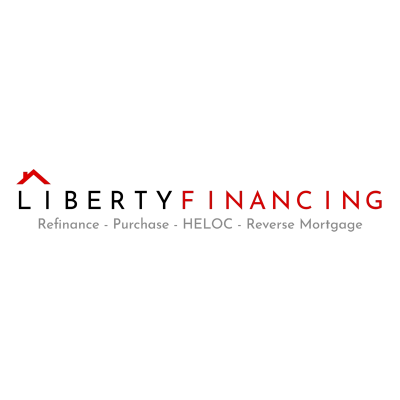7 Surprising Facts About Private Mortgage Insurance (Pmi)
Navigating the complexities of Private Mortgage Insurance can be daunting, but this article demystifies the subject with expert insights and actionable advice. From uncovering hidden opportunities in removing PMI to understanding its impact on credit scores, readers will gain a comprehensive understanding of this financial necessity. Delve into the nuances of PMI with guidance from industry specialists and explore strategies to manage or even avoid it effectively.
- PMI Protects Lenders, Not Homeowners
- Removing PMI: A Hidden Opportunity
- Credit Score Impact on PMI Rates
- Government Loans May Require Permanent Insurance
- PMI Tax Deductions: A Potential Benefit
- Lender-Paid PMI: An Alternative Option
- Piggyback Loans: A Strategy to Avoid PMI
PMI Protects Lenders, Not Homeowners
One thing I learned about private mortgage insurance (PMI) that surprised me is that it doesn't protect the homeowner at all--it only protects the lender in case of default. Many buyers assume that because they're paying for it, PMI offers some kind of benefit to them, but in reality, it's just an added cost that makes homeownership more expensive. What other homebuyers should know is that PMI isn't always permanent. Once you reach 20% equity in your home, either through paying down your loan or appreciation, you can request to have it removed. Some lenders will automatically drop it at 22% equity, but it's always worth being proactive and checking. Also, different loan types have different PMI rules--FHA loans, for example, require mortgage insurance for the life of the loan unless you refinance. Understanding how PMI works and planning ahead can help buyers avoid paying it longer than necessary.
Removing PMI: A Hidden Opportunity
Many homebuyers are surprised to learn that private mortgage insurance (PMI) isn't necessarily a permanent cost. Many think they're stuck with it for the life of the loan, but once a homeowner reaches 20% equity, they can usually request to have it removed. In some cases, lenders will automatically drop it at 22% equity.
This means borrowers should keep an eye on their loan balance and home value to ensure they aren't paying PMI longer than necessary. It's an easy way to reduce monthly expenses, but many don't realize they have the option to remove it.

Credit Score Impact on PMI Rates
Private Mortgage Insurance (PMI) rates are not one-size-fits-all. They can vary significantly based on a borrower's credit score. A higher credit score often results in lower PMI rates, while a lower score may lead to higher rates. This means that improving one's credit score before applying for a mortgage could potentially save money on PMI costs.
It's important for potential homebuyers to understand this relationship between credit scores and PMI rates. By working on their credit score, borrowers may be able to reduce their overall housing costs. Consider checking your credit score and taking steps to improve it before applying for a mortgage.
Government Loans May Require Permanent Insurance
While many people associate PMI with conventional loans, some government-backed loans actually require permanent mortgage insurance. This is a crucial difference that borrowers should be aware of when considering their loan options. For example, FHA loans typically require mortgage insurance for the entire life of the loan, regardless of the equity built up in the home.
This long-term cost can significantly impact the overall expense of homeownership. It's essential for borrowers to fully understand the terms of their mortgage insurance before committing to a loan. Take the time to compare different loan types and their insurance requirements to make an informed decision.
PMI Tax Deductions: A Potential Benefit
Many homeowners are unaware that PMI can be tax-deductible for eligible borrowers. This potential tax benefit can help offset the cost of PMI for some homeowners. However, it's important to note that tax laws can change, and deductions may be subject to income limits or other restrictions.
The ability to deduct PMI premiums could make a significant difference in a homeowner's annual tax liability. It's crucial for homeowners to stay informed about current tax laws and how they apply to mortgage insurance. Consult with a tax professional to determine if you're eligible for PMI tax deductions and how to claim them on your tax return.
Lender-Paid PMI: An Alternative Option
Homebuyers often assume they must pay for PMI themselves, but lender-paid PMI options exist. With lender-paid PMI, the lender covers the cost of the insurance premium in exchange for a higher interest rate on the mortgage. This can result in a lower monthly payment for the borrower, but it's important to consider the long-term costs.
The higher interest rate will remain for the life of the loan, even after the PMI would have been canceled with borrower-paid PMI. Borrowers should carefully weigh the pros and cons of this option. Compare the costs of lender-paid PMI versus borrower-paid PMI over the expected life of your loan to determine which option is best for your financial situation.
Piggyback Loans: A Strategy to Avoid PMI
For homebuyers looking to avoid PMI altogether, piggyback loans present an alternative option. A piggyback loan involves taking out two separate loans to purchase a home: a primary mortgage for 80% of the home's value, and a second loan for the remaining amount needed. This strategy allows borrowers to avoid PMI while still purchasing a home with less than 20% down.
However, it's important to note that piggyback loans often come with higher interest rates on the second loan. Borrowers should carefully consider the total costs and risks associated with this approach. Explore all your loan options and consult with a financial advisor to determine if a piggyback loan could be a suitable alternative to PMI for your home purchase.


